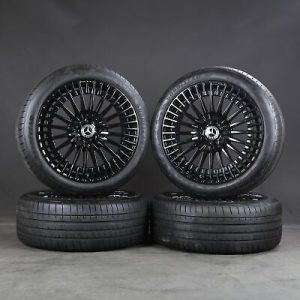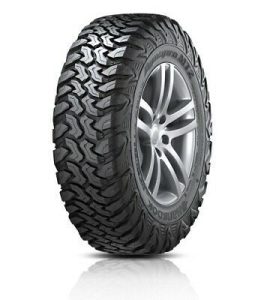Your tires are the only point of contact between your car and the road, playing a vital role in safety, handling, and performance. But like any other component, tires wear down over time. Knowing when to replace your tires is crucial to ensure safe and smooth driving. This comprehensive guide explores the key indicators that your tires need replacing, safety considerations, and helpful tips to maximize tire lifespan.
Understanding Tire Wear and Its Impact
Tire treads are designed with a specific depth to provide optimal grip on the road. Tread depth gradually decreases with use, impacting performance and safety. Here’s why worn tires pose a significant risk:

- Reduced Grip: Shallow tread depths compromise traction, especially in wet or slippery conditions. This can lead to increased stopping distances and hydroplaning, where tires lose contact with the road surface due to a layer of water.
- Poor Handling: Worn tires can make your car handle less predictably, impacting steering responsiveness and cornering ability.
- Blowouts: Severely worn tires are more susceptible to blowouts, which can cause sudden loss of control and potentially lead to accidents.
Therefore, staying informed about your tire tread depth and replacing them when necessary is paramount for safe driving.
The Tell-Tale Signs: When Your Tires Are Screaming for Replacement
Several factors indicate when it’s time to replace your tires:
-
Tread Depth: The most crucial indicator is tread depth. Most tires have wear bars, small raised sections across the tread grooves. When the tread wears down to the level of the wear bars, it’s time for new tires. In the United States, the legal minimum tread depth is 2/32 inches, but many experts recommend replacing tires when the tread reaches 4/32 inches for added safety.
-
Visual Inspection: Look for uneven wear patterns, such as cupping (scalloped wear), feathering (ribbed wear), or center wear. These patterns can indicate alignment issues, improper inflation, or worn suspension components, and necessitate a visit to a tire professional.

-
Age: Even if the tread depth seems adequate, tires degrade over time due to exposure to heat, sunlight, and ozone. Experts recommend replacing tires after six to ten years, regardless of tread depth. Check the DOT code on your tire sidewall to determine its manufacturing date.
-
Visible Damage: Bulges, cracks, or punctures in the sidewall are serious safety hazards and require immediate tire replacement. Don’t attempt to repair these damages – replace the tire.
-
Vibration While Driving: Vibrations at highway speeds can indicate tire imbalance or out-of-round conditions, necessitating a professional inspection and potential tire replacement.
By paying attention to these signs, you can proactively replace your tires before they become a safety hazard.
Safety First: Choosing the Right Replacement Tires
Replacing your tires requires more than just picking a random set. Here are some factors to consider for optimal safety and performance:
-
Vehicle Manufacturer Recommendations: Consult your owner’s manual for the recommended tire size, speed rating, and load capacity for your car. These specifications ensure proper fitment and performance for your specific vehicle.
-
Seasonal Considerations: If you live in an area with harsh winters, consider winter tires specifically designed for snow and ice. These tires have deeper treads and softer rubber compounds for better traction in cold weather.
-
Driving Conditions: For performance-oriented driving or frequent highway travel, consider high-performance tires that offer superior handling and responsiveness. However, these tires typically come with a trade-off in terms of treadwear and noise.

-
Brand and Reputation: Research different tire brands and their reputations for quality, performance, and durability. While cost is a factor, prioritizing safety should always come first.
When purchasing new tires, consider seeking professional assistance from a reputable tire dealer. They can help you choose the right tires for your vehicle and driving needs.
Maximizing Tire Lifespan: Driving for Longevity
Just like any other car component, proper care extends the lifespan of your tires. Here are some practices to maximize your tire mileage:
-
Maintain Proper Tire Pressure: Check your tire pressure regularly (at least once a month) and inflate them to the recommended PSI (pounds per square inch) as specified in your owner’s manual or on a sticker inside the driver’s door jamb. Underinflation is a major contributor to uneven wear and reduced tire life.
-
Tire Rotation: Regular tire rotation (typically every 5,000 to 7,000 miles) ensures even wear across all tires. Consult your owner’s manual for the recommended rotation pattern for your car.
-
Wheel Alignment: Wheel alignment ensures your tires contact the road at the optimal angle. Misalignment can cause premature and uneven tire wear. Get your wheels aligned at least once a year, or more frequently if you hit curbs or experience uneven tire wear.
-
Avoid Overloading: Don’t exceed the weight limit specified for your car. Overloading puts excessive strain on the car tires and can lead to blowouts.

-
Watch Your Speed: High speeds generate more heat, which can accelerate tire wear. Maintain safe speeds and avoid aggressive acceleration or braking.
-
Park in the Shade: Sun exposure can degrade tire rubber over time. Whenever possible, park your car in a shaded area.
By incorporating these practices into your routine, you can significantly extend the lifespan of your tires and save money on replacements in the long run.
The Investment in Safety: Peace of Mind on the Road

New tires are an investment in your safety and the safety of others on the road. By understanding the signs of worn tires, choosing the right replacements, and practicing proper tire care, you can ensure optimal performance, handling, and grip for every journey. Don’t wait until a blowout leaves you stranded – prioritize regular tire checks and replacements for peace of mind behind the wheel.
Ensure Smooth Rides with Top-Quality Tires!
Ready to experience the difference that new tires can make? Head to your local tire dealer or browse online retailers to explore a wide selection of tires from trusted brands. Find the perfect fit for your vehicle and driving needs, considering factors like size, speed rating, and seasonal requirements. Remember, your tires are the foundation of safe driving. Don’t settle for anything less than the best! Invest in a new set of tires today and experience the confidence and control that come with optimal tire performance.
